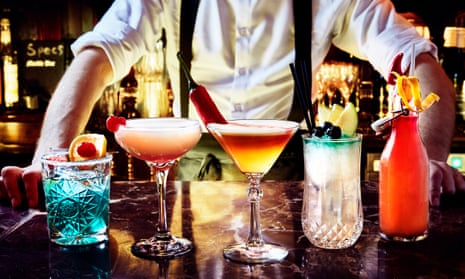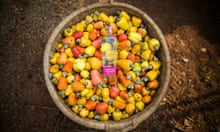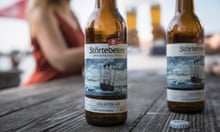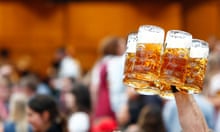While some things about alcohol will never change – such as the bacchanalian urge to tell our friends how much we love them after we’ve had a few – the drinks market is constantly changing.
Over recent years the big trend has been gin. Annual sales have almost doubled over the past five years and in 2018 topped £2bn. The number of distilleries has more than doubled to more than 300 as artisan gin makers have sprung up all over the UK and pubs have even started offering gin menus.
However, there have been other trends, too – such as Aperol spritz, made from the orange Aperol liqueur made by Campari, mixed with prosecco and soda. Aperol sales were up nearly 25%, according to the company’s latest figures. Rum sales – helped by growing demand for gold, dark and spiced varieties – also topped £1bn last year, boosted by younger drinkers’ cocktail habit.
So what will be the big booze trends of 2019?
‘Low and no’
If you believe what you read, millennials are dreary fun sponges who prefer a post-workout oat and wheatgrass smoothie to a pint down the pub.

It would certainly explain why UK alcohol consumption fell from 3.07 units per day in 2003 to 2.57 units per day in 2017, while the number of Brits who do not drink at all has reached 5.4 million, up 35% on 2013.
Drinks companies are responding by launching new products designed to meet rising demand for sober(ish) nights out. There are alcohol-free spirits such as Seedlip on the market, while the British Beer and Pub Association (BBPA) reckons the volume of low- and no-alcohol beer will carry on rising from the 43m pints sold in 2018. There is even a 0.5% wine in Tesco and a de-alcoholised Merlot in Asda, which uses technology from a company called ConeTech to extract alcohol from wine.
Pink/flavoured gin
Partygoers who are not keen on the taste of gin but want to be part of the spirit’s revival – the much-vaunted “ginaissance” – are apparently lapping up pink and flavoured gins as a more palatable alternative. Pernod Ricard UK counts its Beefeater Pink gin among its “innovation” products.
According to the Wine and Spirit Trade Association, flavoured gins – including the pink variety – racked up sales of £165m in 2018, up nearly ninefold on the previous 12 months.
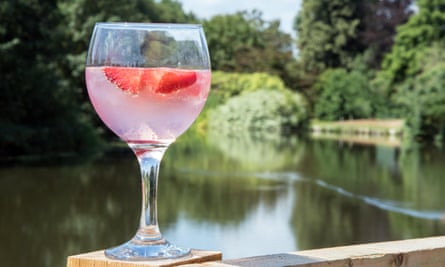
Extreme craft
As craft beer goes mainstream, there comes a time when even the whackiest marshmallow and blueberry-infused porter just isn’t hipster enough. That means brewers and drinkers are going to even greater lengths to be different.
Take Harbour Brewing Co in Cornwall, for instance. The company has bought up farmland so it can grow its own wild herbs and cultivate native yeasts, to achieve flavours that beer connoisseurs will not find anywhere else.
Pay-as-you-go wine bars
Buy a top-up card, load some money on to it, then wander round a room full of wine vending machines, trying whatever you like. You can pay a few pennies for a tiny taste of something, then keep going back for glass after glass or move on to something else.
Vagabond Wines has pioneered this model in London and hopes to expand outside the capital. High initial costs present some barriers to entry, as the wine vending machines do not come cheap. But low staff overheads limit operating costs. It would be no surprise to find would-be competitors jumping into this space.
Hybrid drinks
Younger drinkers have a thirst for novelty and drinks companies are scrambling to slake it. The result is a rise in so-called hybrid drinks, some of which make more sense than others.
Glenfiddich has launched a single malt finished in IPA barrels, providing some unusual hoppy notes. Then there is vodquila and rumquila – exactly what they sound like: hybrids of two spirits that, by rights, belong in different bottles.
Or how about Nuvo sparkling liqueur – made with vodka and sparkling wine.
English sparkling wine
It has been around for a long time now but English sparkling wine really hit the jackpot this year when Ridgeview Wine Estate in East Sussex won the blue riband world’s best producer category at the International Wine & Spirit Competition, the Oscars of wine.
The family-run business triumphed over some of the world’s best-known vineyards and its success has prompted enquiries from importers and distributors around the world, helping cement the reputation of English sparkling wine as a genuine challenger to some of the best fizz that the Champagne region has to offer.

Drinkstagrammers
Alcohol influencers – or drinkers who are determined to take the perfect photo to show off their tipples to followers before downing them. Drinks companies invest heavily in styling cocktails and training bar staff to use the right glass and garnishes because according to the drinks firm Diageo, how cocktails look is becoming just as important as how they taste.
